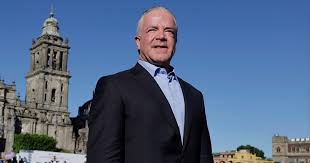There are many novels that, through their pages, take their readers on a journey to Barcelona. Authors of all time and from diverse backgrounds have immortalized it, such as Miguel de Cervantes, Hans Christian Andersen, George Orwell, and others. However, it is the authors born in Barcelona who have best and most unveiled it to their readers, guided by countless authentically Barcelona characters. Delving into its realm invites you to take a literary stroll through its work and explore the city from end to end.
A Literary Muse
Barcelona hides literary settings in numerous corners. It has been the subject of successful novels such as The City of Marvels by Eduardo Mendoza, which describes it amidst two international exhibitions and between Ciutadella Park and Montjuïc; The Shadow of the Wind by Carlos Ruiz Zafón, which immerses itself in the Ciutat Vella district amidst books and bookstores; and The Cathedral of the Sea, by Ildefonso Falcones, which explains the 14th-century construction of the Basilica of Santa Maria del Mar. Furthermore, some of its neighborhoods are closely linked to writers who were born and lived there, and who transformed them into the territory of their characters in numerous works.
El Raval
In A Thief’s Diary, the French writer Jean Genet, who has a square dedicated to him in the Raval, captured Chinatown in the 1930s. This was shortly before the birth of three writers who have shared their childhoods with their readers. Manuel Vázquez Montalbán transformed his hometown into the territory of his crime novels featuring the detective Pepe Carvalho, and, as a food writer, he popularized restaurants such as Casa Leopoldo and Ca l’Isidre. Cinephile Terenci Moix awakened sexuality in a mid-20th-century neighborhood and shared his memories in a trilogy titled The Weight of Straw, a reference to the square next to Ronda de Sant Antoni. Maruja Torres set the childhood of the protagonist of Un calor tan cerca on Carrer de la Unió, although she defines herself as a girl from the Raval who became a lady of the Eixample.
A Feminine Eixample
It is precisely women who have best portrayed Barcelona’s Eixample. Carmen Laforet did so in Nada, using the Plaça de la Universitat and Carrer de Aribau as points from which to explore the entire city; also Mercedes Salisachs, who in La gangrena captured the atmosphere of a bourgeois society that made the Eixample its emblem; But above all, Montserrat Roig, who portrayed its landscapes, interiors, and inhabitants in a prolific work and even explained details of the neighborhood’s history in her book “Dime que me quieres aunque sea mentira” (Tell Me You Love Me Even If It’s a Lie).
From Gràcia to Guinardó
Another woman, Mercè Rodoreda, made Gràcia one of the city’s most emblematic literary sites by turning Plaça del Diamant into the center of the universe of Colometa, her most beloved character. Shortly after, she elevated Carrer de les Camèlies, in the neighboring Guinardó neighborhood, to the status of a classic of Catalan literature, having named a novel after it.
Rodoreda shares these neighborhoods with another of the Barcelona writers who has best known their city to the world: Juan Marsé. Throughout his numerous works, Marsé has had his characters move through Guinardó, Gràcia, La Salut, and Carmel, pausing in numerous corners. The Delicias bar on the Carmel road, where the Pijoaparte of Últimas tardes con Teresa would kill time, is the best place to savor this writer’s settings.
The Lyrics of the Uptown District
The grace of literature has also touched the Sarrià-Sant Gervasi district, as it is the birthplace and residence of prominent figures, such as the Goytisolo brothers, the novelists and essayists Juan and Luis, the poet José Agustín, and the poets Joan Maragall, Jaime Gil de Biedma, Joan Brossa, Joan Margarit, Joan Vinyoli, and others. Gardens such as Turó Park, Turó del Putxet, and Monterols have been inspiring corners and settings for poems that invite you to take a most lyrical journey.
However, to explore the streets of old Sarrià in a sweet way, you have to do it with Josep Vicenç Foix, the son of local pastry chefs who, while working in the bakery, became the quintessential Catalan avant-garde poet. The Foix pastry shop in Sarrià, which currently has two locations in this neighborhood, is an institution and a place of pilgrimage for lovers of delicious sweets and good literature. It was for Vázquez Montalbán, who used to stop on his way home to Vallvidrera. The writer from Raval chose this neighborhood of single-family homes located in the middle of Collserola to live out his adult life and for his character Pepe Carvalho to live there. It is with Vázquez Montalbán that you have to look out from the viewing platforms of Passeig des Aïgues to contemplate a literary city that is constantly changing.








